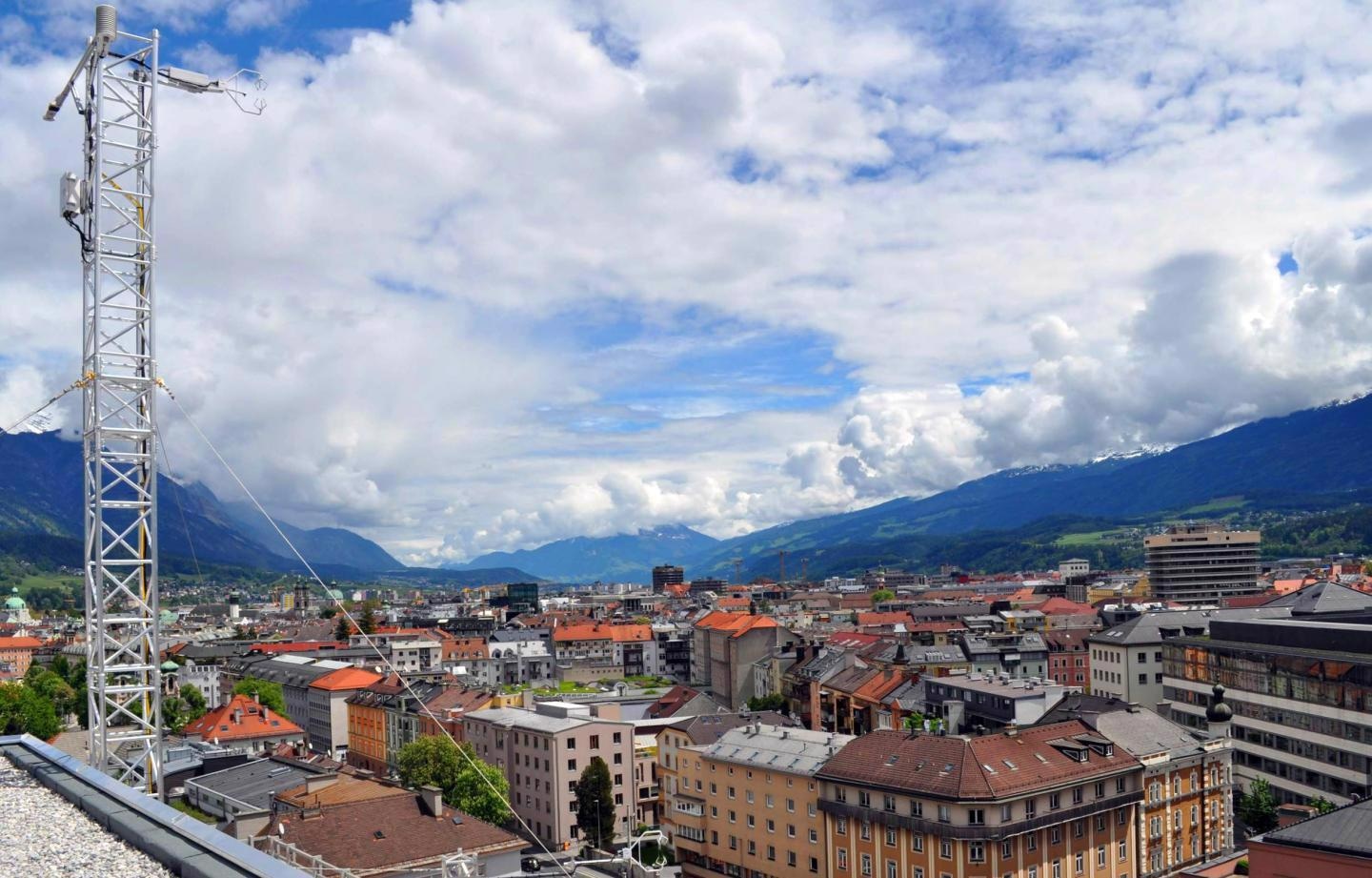At the starting of the Corona pandemic in March 2020, the extensive mobility restrictions created a special condition for atmospheric sciences.
 The Innsbruck Atmospheric Observatory is located on the roof of the Bruno Sander House at the University of Innsbruck in the center of the Tyrolean capital. Image Credit: Uni Innsbruck.
The Innsbruck Atmospheric Observatory is located on the roof of the Bruno Sander House at the University of Innsbruck in the center of the Tyrolean capital. Image Credit: Uni Innsbruck.
During the 2020 lockdown, we were able to directly investigate the actual effects of drastic traffic restrictions on the distribution of air pollutants and on the emission of climate gases.
Thomas Karl, Atmospheric Scientist, University of Innsbruck
Together with his research group, Karl has currently published an elaborate analysis of air quality at the time of the first lockdown in the city of Innsbruck, Austria, in the Atmospheric Chemistry and Physics journal.
On summarizing the findings, the researcher stated, “We find significantly greater decreases of air pollutants than of carbon dioxide, for example.”
During the past year, a few studies demonstrated contrasting outcomes since the impact of weather was mostly not accounted for, or an elaborate comparison with emission data was not feasible.
By using a special measurement approach along with elaborate source emission data, the Innsbruck team can now offer a dependable analysis. Their outcomes verify predictions from previous work.
The decrease in nitrogen oxides and other pollutants due to reduced traffic is stronger than often assumed. We find that the proportion of nitrogen oxides emitted from traffic is higher than often assumed, while the proportion from domestic, commercial and public energy consumption is lower.
Thomas Karl, Atmospheric Scientist, University of Innsbruck
With the shift to cleaner combustion in the industrial and residential sectors, the European energy transition is having a positive impact on air quality and has been undervalued in a few instances.
We project that in many European inner cities, comparable to Innsbruck, more than 90 percent of nitrogen oxide emissions are caused by traffic.
Thomas Karl, Atmospheric Scientist, University of Innsbruck
Emission Models Need to be Adjusted
Throughout Europe, in urban regions, the air quality thresholds for nitrogen oxides and other pollutants are often exceeded. It is not always easy to find out which polluters are accountable for the amount of emission.
The main technique for measuring emissions has been dependent on exhaust emission tests on test stands that were extrapolated in a model later. But the real amount of air pollutants discharged by a vehicle or a heating appliance in daily use can rely on several factors.
The diesel scandal has made it obvious how indecisive measurements on the test stand can be while interpreting their effect on the surroundings. Evaluation of air management by environmental and health authorities relies greatly on atmospheric models that depend on precise emission data.
So far, it has been very hard to evaluate actual air pollutants discharged in a particular region and limiting their emissions.
Under the guidance of Thomas Karl, a research group from the Department of Atmospheric and Cryospheric Sciences at the University of Innsbruck closes this gap with the purported eddy covariance technique.
This method involves quantifying the composition of air and flow of wind thoroughly and hence enables findings to be drawn regarding the air pollutant emission strengths. The air over Innsbruck is currently being studied constantly by using the Innsbruck Atmospheric Observatory (IAO) installed at the University of Innsbruck.
The present study was financially supported by the Austrian Science Fund FWF.
Journal Reference:
Lamprecht, C., et al. (2021) Decoupling of urban CO2 and air pollutant emission reductions during the European SARS-CoV-2 lockdown. Atmospheric Chemistry and Physics. doi.org/10.5194/acp-21-3091-2021.